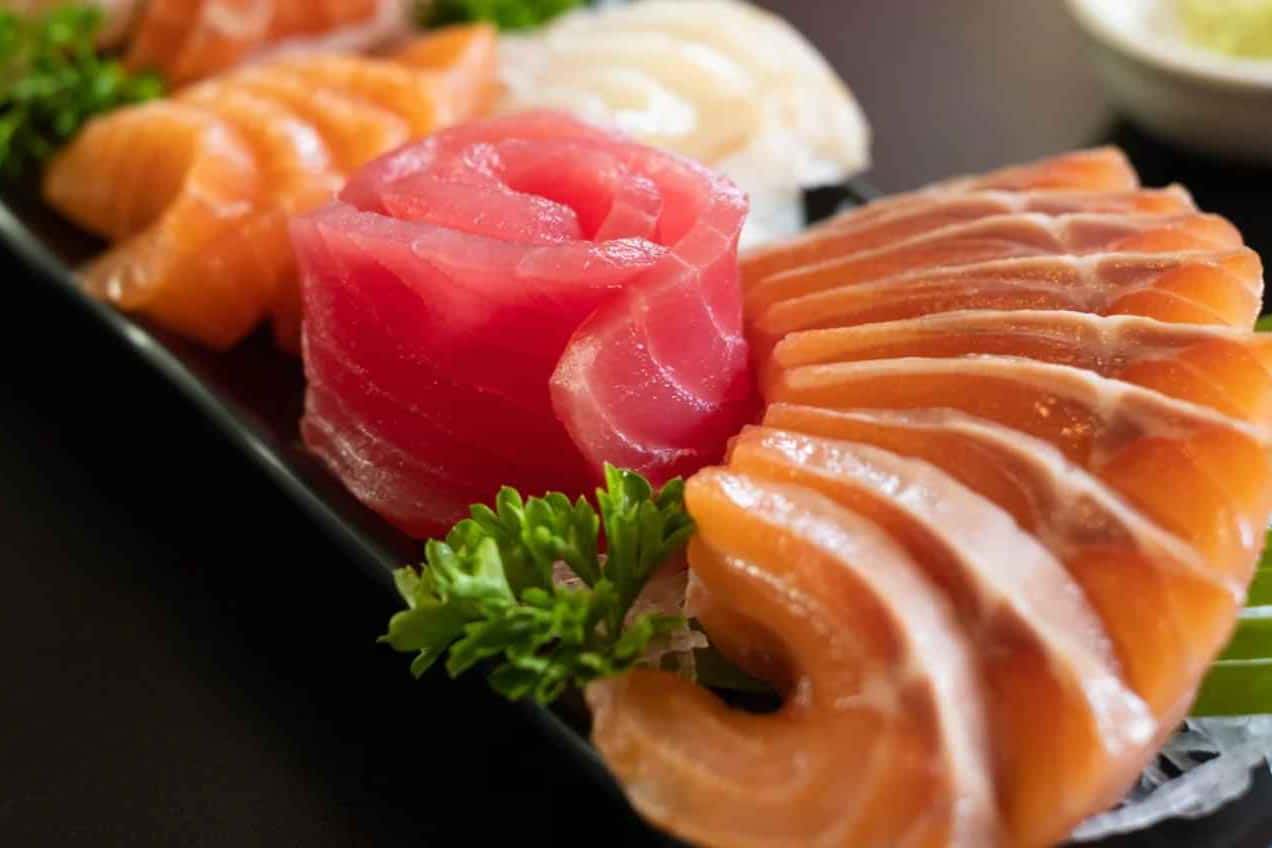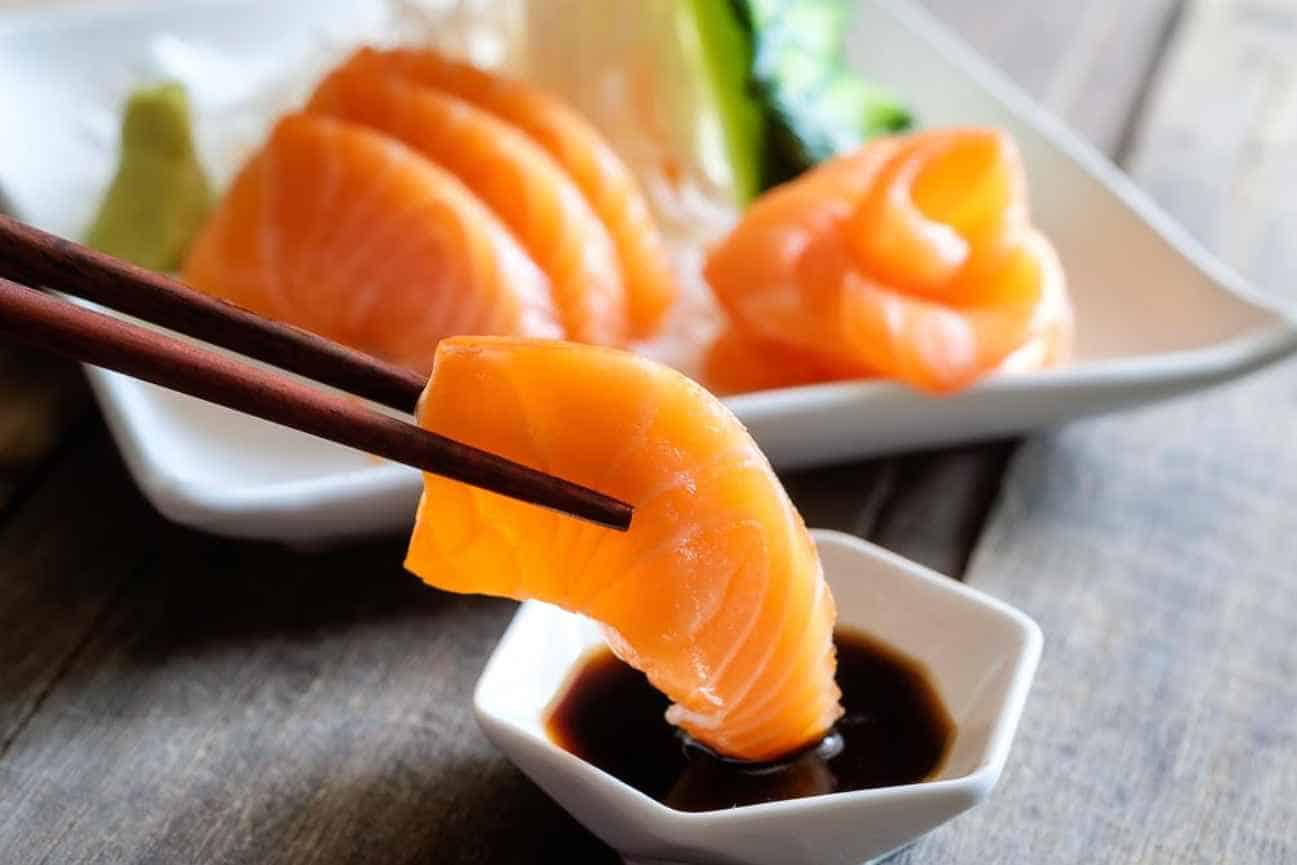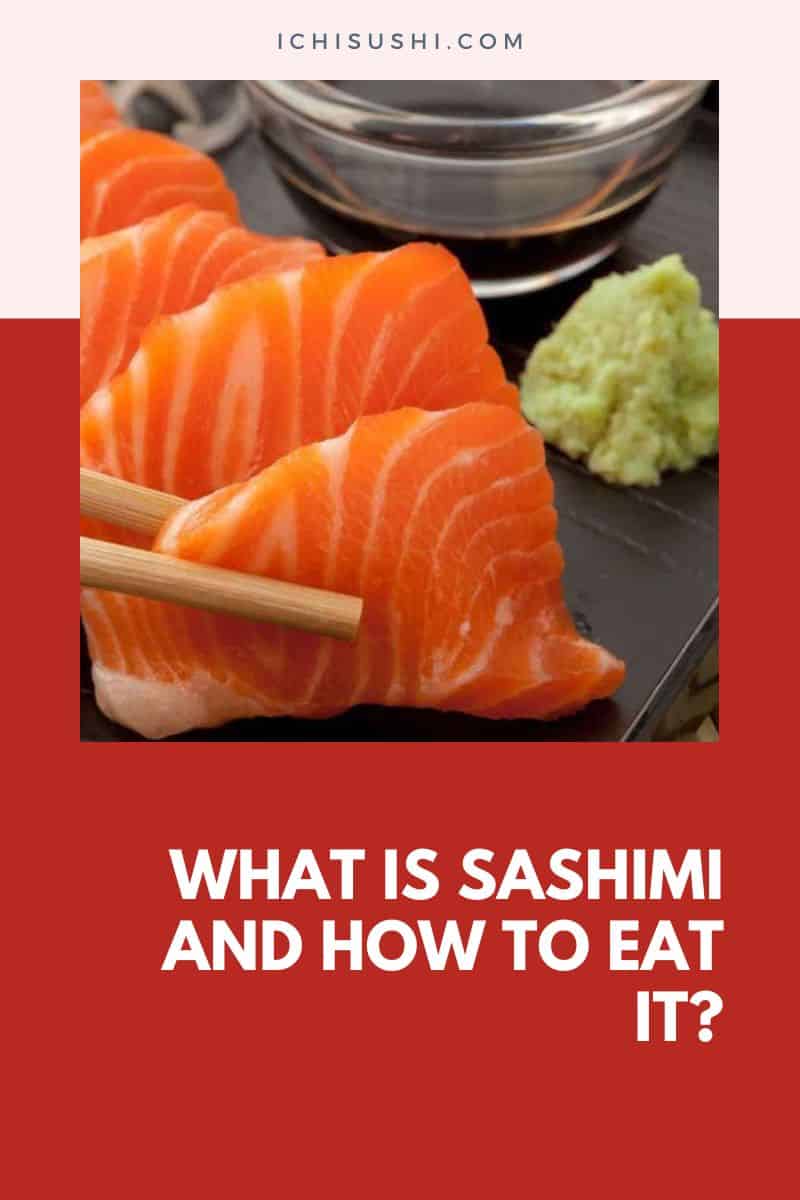Have you tried eating sashimi before? If it’s your first time trying raw fish or, maybe, searching for ways to add finesse to your skills, this guide is for you!
Here, we’ll walk you through the basics of sashimi, from the different types of fish to how to eat it properly, and bonus tips to remember. So, by the end of this blog, you can savor every bite and do justice to the cuisine without hesitation.
What is a Sashimi?
Sashimi is a thinly sliced raw fish or meat originating in Japan. It comes from the two words sashi and mi, meaning pierced body. Sounds inauspicious, right? But if we try to look at the harvesting process, it does make sense. Traditionally, sashimi-grade fish are caught individually.
As soon as the catch is out of the water, harvesters pierce the brain with a sharp spike. Then, they place the fish in slurried ice to keep it fresh.
Sashimi is usually served on its own. It could be shellfish, mollusks, roe, mullet, and many more. However, it does not contain vinegared rice, so it cannot fall under the category of sushi.
Popular Types of Sashimi
Apart from your usual sushi order, why not explore the world of sashimi for your next sushi bar visit? There are many sashimi varieties you may encounter, but here are the popular ones you can try first:
- Maguro(Tuna) Sashimi: The lean layer (Akami) is the most popular slice since it has less fat and more protein. Conversely, the fatty layer (Toro) is more expensive and tastier.
- Sake(Salmon) Sashimi: The layers of salmon are somewhat similar to a tuna. But its taste is more fish-forward and robust.
- Hamachi (Yellowtail) Sashimi: It is a firm fish with a high unsaturated fat content The flavor is mild to slightly sweet and has a buttery texture that can melt in your mouth.
- Saba(Mackerel) Sashimi: It is usually cured with vinegar and salt to keep it fresh and kill the bacteria.
- Uni(Sea Urchin) Sashimi: These are sea urchin gonads that are considered a rare treat, as reflected by their price. It has a light and sweet taste with a custard-like consistency.
- Hotate(Scallop) Sashimi: This is a bivalve mollusk that has a firm texture and sweet, almost creamy flavor. It is also meatier than other raw fish served.
Traditional Preparation Method of Sashimi
The size and the thickness of the fish strongly affect its taste and texture. So, to maintain service quality, chefs follow the standard cut of 10 mm per slice.
This technique is called hira-zukuri, and you’ll find this mostly in salmon and tuna. Another cut you should know is usu-zukuri. It is a thin, diagonal slice applicable for firm fish like flounder and bream. The 2mm width makes it easier to chew despite the texture.
After the delicate slicing process, they layer it on a flat plate and add garnish. A few examples are:
- White radish or daikon
- Shiso leaves
- Sliced raw vegetables like cucumber and carrots
- Green seaweeds or wakame
Aside from these, you’ll also see the most common condiments: soy sauce and wasabi paste. But other restaurants also include other spices/dips like:
- Freshly grated ginger
- Pickled ginger
- Fresh garlic
- Ponzu (for meat sashimi)
How To Eat Sashimi
Sashimi is customarily the first dish in a formal Japanese meal. It is to prevent the robust flavors of other food from affecting your palate. But, you may also encounter restos where they serve it as a main course, alongside a bowl of rice and miso.
Now, here’s the dreaded question: Is there a proper way to eat sashimi, or is it similar to sushi? While it is acceptable to eat sushi with bare hands, it is more ethical to use chopsticks for sashimi. Never get tempted to put your hands in the raw fish or meat.
When eating, apply a small amount of wasabi to the sashimi slice. Grab it with your chopsticks and dip half of it, fish side down, in the soy sauce. Yup! There is no need to dunk the whole thing, as a small amount can enhance the flavor already. Also, avoid mixing the soy sauce and wasabi paste beforehand. Combining the two condiments can taint its spiciness and aroma.
Take one whole bite of the slice and savor the freshness of the fish. If the cut is too big, you can gently ask the chef to make it smaller. Lastly, you can request a pickled ginger to cleanse your palate between bites.
Bonus Tips When Eating Sashimi
Understanding how to eat sashimi properly can save you from rude stares. But more importantly, it shows how much you respect the effort chefs put into the plate. So here are other tips to keep in mind when eating sashimi at a traditional Japanese restaurant:
- Practice holding the chopsticks. Sashimi is delicate—too much pressure can easily break the raw fish.
- If you can’t control a chopstick and want to try a sashimi, it’s okay to request a fork.
- Don’t let the food wait! Eat the sashimi immediately before the flavor deteriorates.
- Never combine a palate cleanser with sashimi. It is meant to be eaten separately.
- If shiso leaves are available, you can wrap them around the sashimi before you dip it in soy sauce. Shiso leaves have an antibacterial compound, keeping you safe from bacteria.
- When you’re unsure what type of sashimi to get, you can ask for a sampler platter. That way, you have an idea of what each tastes like.
- Lastly, and most importantly, check if you have allergies. Or if high-mercury fish is permitted in your current diet.
Take Away
Understanding how to eat sashimi opens a new realm of food etiquette. Let’s admit it: We’re too occupied with sushi, forgetting that these are two different things. Sushi is more flexible and does not follow strict guidelines. Conversely, sashimi is more on the intricate side and needs specific treatment.
But while these techniques seem all fancy, remember that enjoying the food is the most important aspect. So, happy eating, and may your bellies be filled with tasty sashimi!

Hiroshi Nakamura, a Tokyo-born sushi chef turned US-based writer and critic, is the voice behind ichisushi.com, blending traditional sushi wisdom with modern insights.





